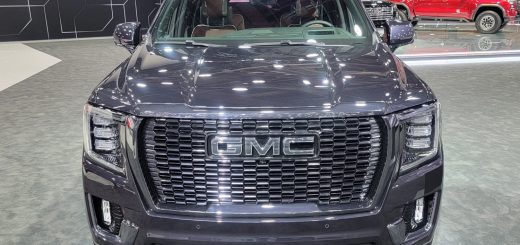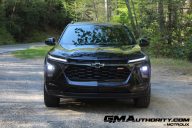Just last week, General Motors officially announced it would reintroduce the Hummer brand as a new all-electric pickup truck under the GMC umbrella. Dubbed the GMC Hummer EV, GM provided a few tantalizing details on what the all-electric pickup would offer, and now, we have new specs with regard to the powertrain setup.
According to GM President Mark Reuss, the GMC Hummer EV will offer three different powertrains, each of which will have a unique motor combination and output levels.
Speaking to investors earlier this week, Reuss shed some light on the different powertrain setups of the forthcoming GMC Hummer EV:
“When we go to market, we’ll have one-motor, two-motor, three-motor versions, offering different ranges, different performance at different price points to meet the customers’ needs whatever they may be,” Reuss said.
The statement was made after GM’s claim that the new GMC Hummer EV would produce upwards of 11,500 pound-feet of torque, while previous GM Authority reports have indicated that the pickup will make upwards of 1,000 horsepower, while sprinting to 60 mph in 3 seconds. As we covered previously, that 11,500 pound-feet figure is likely calculated using some non-standard methodology, and is designed to grab attention, with a standard measurement placing the EV’s torque figure somewhere in the ballpark of 1,100 to 1,400 pound-feet.
Regardless, these head-spinning numbers will most likely be tied to the top-tier, three-motor setup Reuss mentioned to investors, which opens up the possibility for more accessible trim levels with the single- and double-motor configurations. Additionally, the new EV will offer “incredible on- and off-road capability,” with the multiple motor setups suggesting both RWD and AWD to put the power down.
Look for the new GMC Hummer EV to debut May 20th, 2020, at the Detroit-Hamtramck Assembly plant in Michigan. We’ll be following this story closely, so stay tuned, and make sure to subscribe to GM Authority for more GMC Hummer news, GMC news, and 24/7 GM news coverage.

















Comments
Rumour is that the range topping battery could be a 192kwh. Even with marginal increase in battery densities, that will be one heck of a heavy battery and subsequently heavy truck.
For reference, the Tesla 85kwh battery is 1200lbs so the Hummer battery pack alone could be 2700lbs or about the weight of a Chevy Cruze sedan.
GM’s pouch cells are lighter than Tesla’s cylindrical cells that are rapped in aluminum. Also the pouch cells don’t require the elaborate cooling that Tesla’s cell require, so there’s also less weight there.
I can’t speak to the weight of the cooling systems, but Tesla’s batteries are more energy dense per kg than the Bolts
And the Tesla cells being closer to each other are more prone to catastrophic failures as soon as one cells erupts! There have been NO Bolt EV fires!
Closer by millimeters? In a crash all bets are off anyways.
My point wasn’t about Tesla versus others, it was about the 3/4 ton diesel truck curb weight the Hummer EV will undoubtedly have. Making towing GCRW an issue for one, payload another. Or having to run more expensive and heavy LT tires.
Eh, no one is going to be towing with the new Hummer. If you’re towing, get a 2500 Sierra. The Hummer is about status, luxury and offroading, not towing or payload.
That makes sense as my Volt was EPA expected 3.78 miles per kWh (I get about 4-4.5 miles per kWh) and the Hummer by virtue of weight and aerodynamics will be less efficient per kWh. To give an ballpark estimate:
400 miles / 2 miles per kWh = 200 kWh storage needed
That high torque number is physically and numerically possible since the torque of an electric motor is inversely proportional to the rotational speed while the HP is fixed. Try dividing the HP by less than one RPM! This is why we have electric power tools, and why electric mowers are more powerful than gas engine mowers. And that is why electric drag racers are faster than gassers.
That’s not how that works…torque is constant, power proportionally increases with RPM.
This is interesting. Good discussion on the battery and weight. I remember hearing that 400 miles per full charge was the rumored number. That’ll be the high end, 1,000 horsepower version.
I’d imagine that the Hummer will be offered in the exact same configurations as the Tesla:
1 Motor Variant: RWD, maybe 200 miles?
2 Motor Variant: AWD, 300 miles?
3 Motor Variant: AWD, 400 miles?
Does anyone know if the Cybertruck has two motors on the front or the back for the 3 motor variant? I’m not sure whether I’d prefer the dual motors in the front or back on the 3 motor Hummer, in terms of offroading. Probably front.
My main question here is what is the range difference under load/towing?
TFL saw something like a 65% drop in range when they towed with a Model Y, can’t remember how much weight they towed exactly, maybe 4000lbs.
And I think it was Engineering Explained on YouTube that has a great explanation of towing versus energy consumption using a gas F150 as a benchmark versus EVs and how different trailer weights impact unit of energy consumption